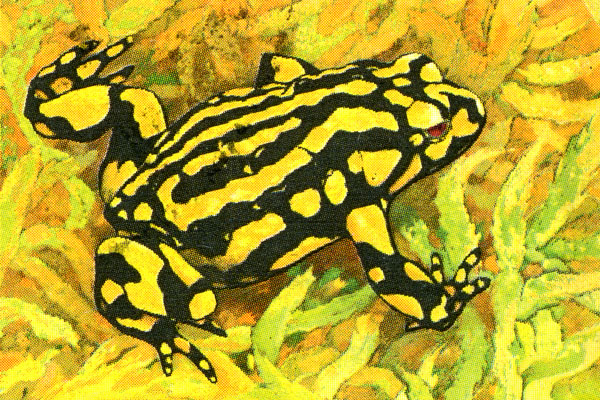Two opposing motions at the IUCN World Conservation Congress expose deep divisions over whether genetic engineering belongs in nature conservation.
The World Conservation Congress – a global meeting of conservation leaders – begins this week in Abu Dhabi.
Among the most controversial items on the agenda are two opposing motions on the use of genetic technologies in wild ecosystems – one that would normalise their use and another that calls for a global moratorium.
Motion 87, proposed by the IUCN Council, would integrate genetic engineering into conservation as “just another tool in the toolbox,” provided that procedures such as risk assessment, benefit assessment, and FPIC are followed.
Motion 133, proposed by eight NGOs, calls for a moratorium on the release of genetically engineered wild organisms and genetic elements to prevent irreversible harm to species and ecosystems.
The idea of uncritically accepting a wide variety of genetic engineering technologies (often referred to as synthetic biology in the conservation sphere) in wild nature is reckless at best, and follows a pattern of hubris and lack of precaution that stretches back decades. A global moratorium is challenging in different ways, but given the huge number of ethical, scientific, and regulatory unknowns, it is a credible alternative.
Motion 133 was introduced by international NGOs in an effort to safeguard nature’s integrity in the face of rising proposals to genetically engineer wild species in natural ecosystems.
Engineering nature
More information on the motion, backed by the International Federation of Beekeepers’ Associations and more than 90 NGOs worldwide, can be found on a new website Engineering Nature.
Renowned scientists have signed an open letter in support of the moratorium. This letter is still open for signatures.
The website also features five case studies that examine the claimed conservation benefits, the risks to engineered species and the environment, and the inadequate regulatory frameworks surrounding synthetic biology in wild nature. These case studies, produced in collaboration with A Bigger Conversation, include the Dire Wolf, the American chestnut, the eradication of rodents on island ecosystems, the black-footed ferret, and the southern Corroboree frog.
Response to rapidly evolving technology
The term synthetic biology refers to biotechnologies that can engineer, redesign, or synthesise biological systems — including organisms. It blurs distinctions between older genetic engineering methods and newer approaches such as genome editing.
The Convention on Biological Diversity (CBD) defines it as “a further development and new dimension of modern biotechnology that combines science, technology and engineering to facilitate and accelerate the understanding, design, redesign, manufacture and/or modification of genetic materials, living organisms and biological systems.”
Motion 133 aims to protect nature by applying the Precautionary Principle to these rapidly advancing technologies. The principle holds that where activities pose potential risks to the public or environment — even amid scientific uncertainty — preventive measures should be taken. The CBD’s Preamble states: “Where there is a threat of significant reduction or loss of biological diversity, lack of full scientific certainty should not be used as a reason for postponing measures to avoid or minimise such a threat.”
A slow burn
The IUCN has grappled with the issue of synthetic biology for years but has yet to reach consensus.
An IUCN assessment, Genetic Frontiers for Conservation, published in 2019, was criticised by NGOs – including IUCN member organisations – and scientists as an insufficient basis for deliberation.
A draft set of IUCN Principles on Synthetic Biology and Biodiversity Conservation presented to the 2021 Congress in Marseille included the option of moratoria:
“There could be situations in which moratoria on the environmental release of specific applications of synthetic biology (including engineered gene drives) are warranted…”
However, members did not adopt these Principles. Instead, they called for an “inclusive and participatory process” to develop an IUCN policy on the “use of synthetic biology in nature conservation,” to be adopted at the next Congress (Resolution 123).
NGOs have since denounced the policy development process for its lack of transparency, conflicts of interest, and insufficient involvement of Indigenous Peoples and Local Communities (IPLCs).
Ahead of the 2025 Congress, a draft IUCN policy on synthetic biology has been proposed as part of Motion 087. Critics argue that it fails to provide sufficient safeguards against negative and irreversible harm to nature — and requires significant improvement.
New advances, new risks
Capabilities in genetic engineering have expanded dramatically in recent years. The latest advances enable engineers to:
- Create organisms radically different from those occurring in nature (“new-to-nature”);
- Perpetuate genetic processes outside the laboratory (“outdoor genetic engineering”); and
- Engineer or wipe out entire populations of wild species (“gene drives”).
The convergence of genetic engineering with generative artificial intelligence has opened the door to so-called generative biology or machine-driven biodesign, where AI models trained on biological data generate novel genetic or protein sequences.
Given today’s fragmented regulatory framework, synthetic organisms or genetic elements could be released without adequate oversight, potentially disrupting ecosystems, harming human health, and undermining socio-economic and cultural rights.
A test of credibility
As the IUCN gathers in Abu Dhabi, it faces a defining choice.
The debate between precaution and technological optimism will test the organisation’s credibility as a guardian of nature — not an enabler of experiments upon it.
Motion 133 offers a pause for reflection, and perhaps the last opportunity to ensure that conservation remains about protecting nature, not redesigning it.
- The Engineering Website is a project of Save Our Seeds. Read more about the project and Motion 133 here.
- Individuals can show their support for the moratorium by signing this global petition.

